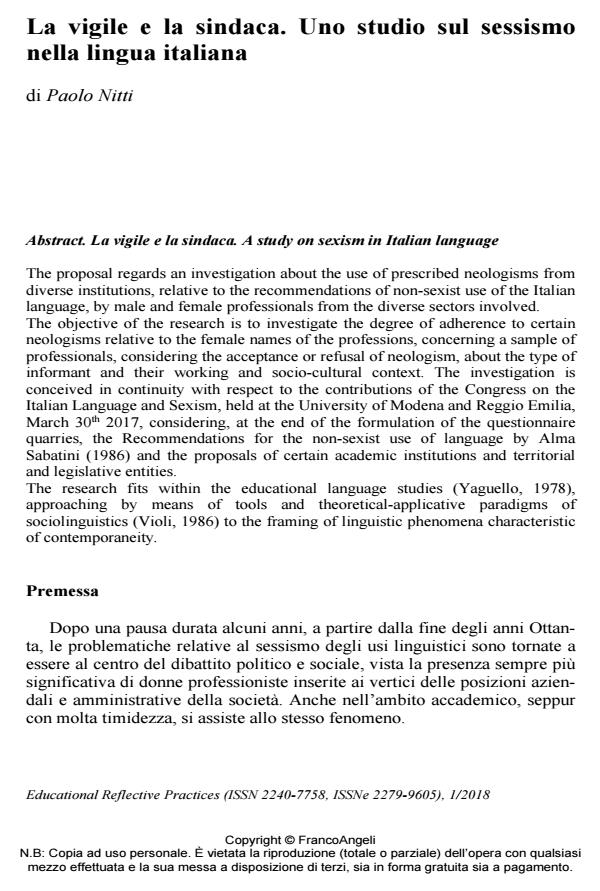La vigile e la sindaca. A study on sexism in Italian language
Journal title EDUCATIONAL REFLECTIVE PRACTICES
Author/s Paolo Nitti
Publishing Year 2018 Issue 2018/1
Language Italian Pages 20 P. 122-141 File size 312 KB
DOI 10.3280/ERP2018-001008
DOI is like a bar code for intellectual property: to have more infomation
click here
Below, you can see the article first page
If you want to buy this article in PDF format, you can do it, following the instructions to buy download credits

FrancoAngeli is member of Publishers International Linking Association, Inc (PILA), a not-for-profit association which run the CrossRef service enabling links to and from online scholarly content.
The proposal regards an investigation about the use of prescribed neologisms from diverse institutions, relative to the recommendations of non-sexist use of the Italian language, by male and female professionals from the diverse sectors involved. The objective of the research is to investigate the degree of adherence to certain neologisms relative to the female names of the professions, concerning a sample of professionals, considering the acceptance or refusal of neologism, about the type of informant and their working and socio-cultural context. The investigation is conceived in continuity with respect to the contributions of the Congress on the Italian Language and Sexism, held at the University of Modena and Reggio Emilia, March 30th 2017, considering, at the end of the formulation of the questionnaire quarries, the Recommendations for the non-sexist use of language by Alma Sabatini (1986) and the proposals of certain academic institutions and territorial and legislative entities. The research fits within the educational language studies (Yaguello, 1978), approaching by means of tools and theoretical-applicative paradigms of sociolinguistics (Violi, 1986) to the framing of linguistic phenomena characteristic of contemporaneity.
- Feminine-specific job titles: a research on sexism in the Italian language Paolo Nitti, in Modern Italy /2021 pp.1
DOI: 10.1017/mit.2020.31
Paolo Nitti, La vigile e la sindaca. Uno studio sul sessismo nella lingua italiana in "EDUCATIONAL REFLECTIVE PRACTICES" 1/2018, pp 122-141, DOI: 10.3280/ERP2018-001008